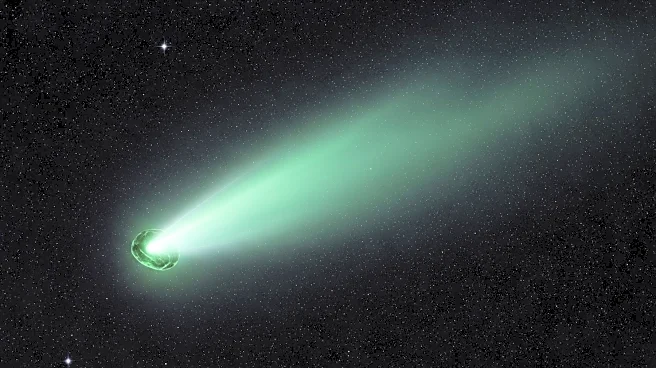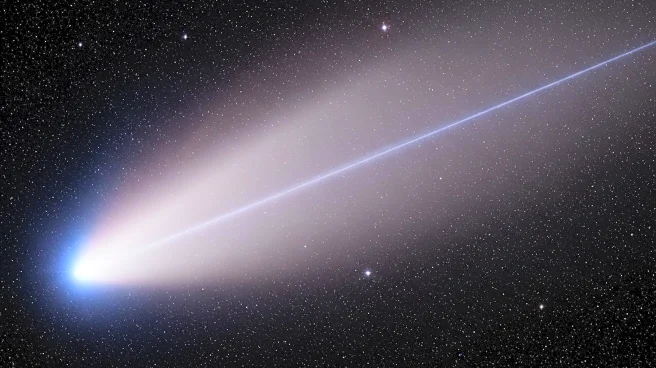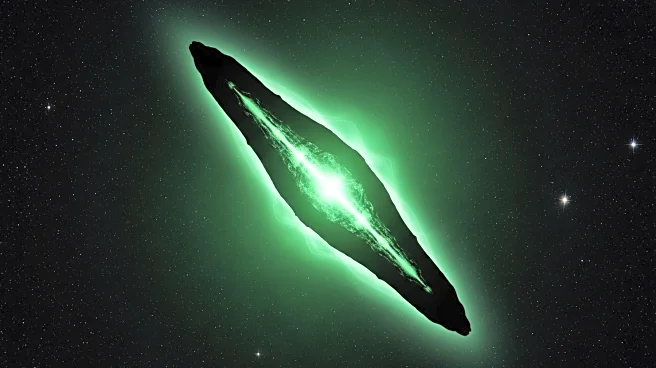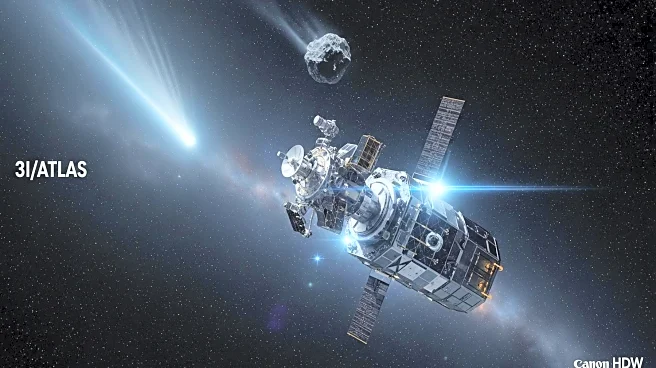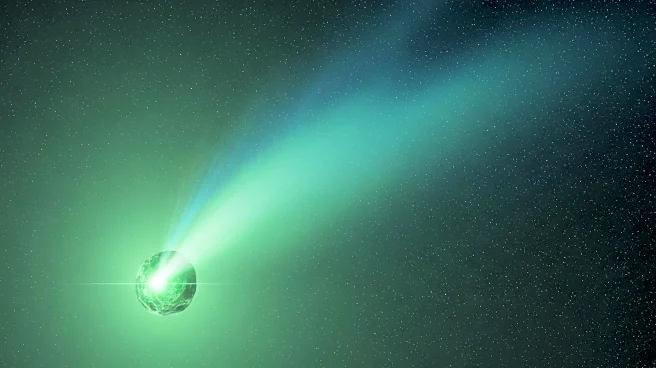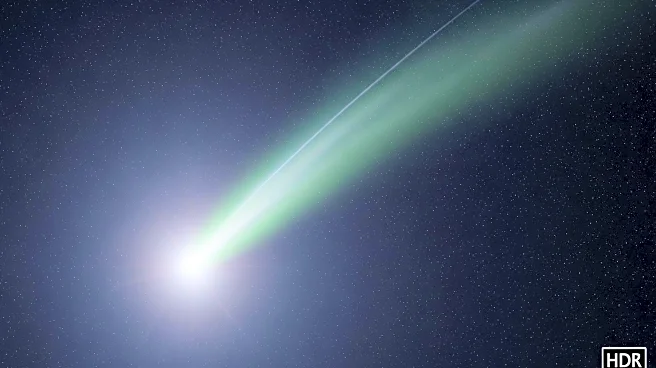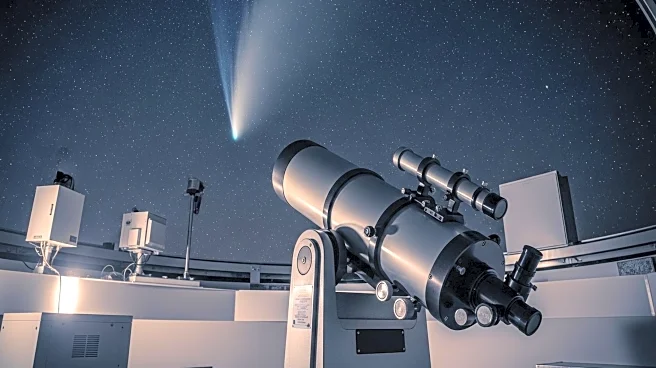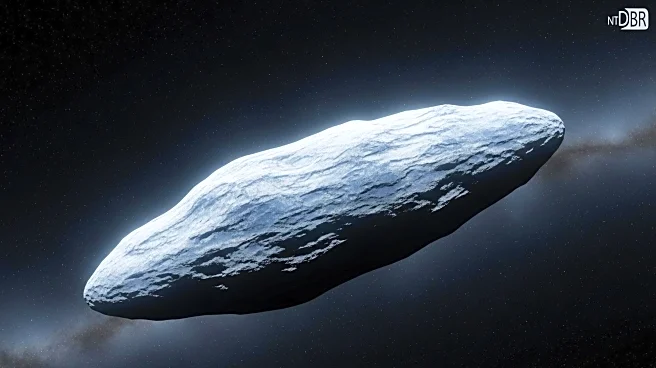What's Happening?
Astronomers have identified a new interstellar object, 3I/ATLAS, marking the third such discovery. Detected by the Asteroid Terrestrial-impact Last Alert System (ATLAS) on July 1, 3I/ATLAS is traveling at a speed that surpasses the solar system's escape velocity, confirming its interstellar origin. Initial observations suggest it is a comet, characterized by a coma and tail, and composed of frozen gases, rock, and dust. The object is moving at approximately 60 kilometers per second, making it the fastest known object to pass through the solar system. Its composition includes an abundance of carbon dioxide, carbon monoxide, and water ice, with a nucleus estimated to be about 2.8 meters across.
Why It's Important?
The discovery of 3I/ATLAS provides a rare opportunity for astronomers to study an object from outside our solar system, offering insights into the formation and composition of other stellar systems. Understanding its characteristics could enhance knowledge of interstellar objects and their potential impact on our solar system. The presence of unusual polarization and composition compared to solar system comets raises questions about the diversity of interstellar bodies. This research could inform future missions and the search for similar objects, contributing to the broader understanding of the universe.
What's Next?
3I/ATLAS will soon disappear into the sun's glare but is expected to reappear in December, allowing astronomers to continue their observations. The Vera C. Rubin telescope in Chile may facilitate the discovery of more interstellar objects, enabling earlier detection and extended study periods. As 3I/ATLAS approaches Mars, the Mars Reconnaissance Orbiter will provide high-resolution images, offering further data on its structure and behavior. These observations will help refine models of interstellar object trajectories and compositions.


